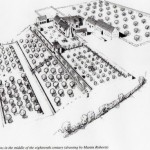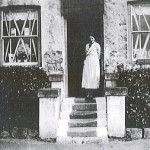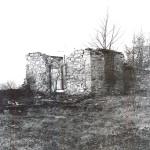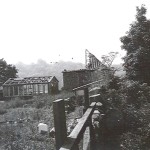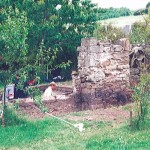Over the past 350 years, Old Durham has been a private garden attached to a manor house, a commercial nursery, a public park, a bowling green and tennis courts.
Medieval Old Durham
The first records of Old Durham date from the 12th century, when it belonged to the rector of St Nicolas’ church. In 1268 a chapel and private oratory were established by Golfrid de Helme of the Rectory of St Nicholas.
In 1443, land owned by St Nicholas’, which included Old Durham, was appropriated by Bishop Neville and given to Kepier Hospital. In 1479, the Master of Kepier leased Old Durham to his brother, Richard Booth, for a length of 99 years.
Private Gardens
The estate at Kepier Hospital was sold in 1545 as part of the Dissolution of the Monasteries, and passed into the ownership of John Heath I. However, the Booths continued to lease Old Durham for a while, living here in a modest medieval manor.
In 1630, John Heath IV sold Kepier and moved to Old Durham with his wife Margaret. The gardens were first laid out in this time, sometime between 1630 and John’s death in 1665.
After John’s death, the estate passed to his only daughter Elizabeth and her husband, John Tempest I, MP for Durham. The couple continued to live in Old Durham, as did their son William, also an MP. However, in 1719, the Tempests left Old Durham and moved to Sherburn.
The Tempest family remained owners of the Old Durham estate until 1794, and they continued to use the gardens at Old Durham. Between 1725 and 1735, they renovated the gardens and remodelled the gazebo.

A Place of Public Resort
The Tempests appear to have left Old Durham by 1748, by which time it was run by a commercial nursery by gardener John Thackray and then by his widow, Jane. By 1776 the upper garden was fully enclosed with the stone wall to the north being particularly high to enable the cultivation of south facing fruit trees. A commercial nursery was still present at Old Durham in 1844.
Through the 1750s, music concerts were held at Old Durham. The Newcastle Courant reported a concert in June 1753 at which the “Choir of Durham performed a grand Concert of Music to a brilliant Assembly of Gentlemen and Ladies”. The following May, the newspaper reported a “concert of vocal and instrumental musick”, performed to an audience “very large and genteel”, and again the following year a concert was run by the celebrated composer John Garth, organist of Durham Cathedral.
By 1776, documents show that the mansion at Old Durham had been demolished. It is likely that the building was dismantled and sold for building materials.
Several years later, in 1787, William Hutchinson described the gardens:
“The gardens are formed into terraces of a considerable length. This sweet retirement has become a place of public resort, where concerts of music have frequently been performed in the summer evenings, and the company regaled with fruit, tea, etc. The gardens are open all summer for rural recreation. The terraces command the elegant valley prospect before described.”
In 1834, the Pineapple Inn was already established as a public house supporting the commercial and recreational activities of the gardens. The first edition Ordinance Survey map in 1857 shows the walled gardens as a bowling green.
In 1918, Lord Londonderry, descendent of the Tempests, sold the Pineapple Inn and Old Durham Gardens to Victor Mazzini Walton. Mr Walton was an artist and ice cream maker and continued to develop the Gardens as a pleasure ground for public recreation. A 1921 advert describes it as having tennis courts, putting green, running track and a tea garden.
The Pineapple Inn was still licensed in 1921, but five years later it lost its licence, some say due to its unfavourable reputation. The reality may be less exciting, as perhaps its dwindling customers moved to more accessible city centre pubs. Whatever the reason, the Pineapple continued to serve soft drinks, and the popular weekend dances were a feature of Durham life between the wars. The dances took place on an open-air dance floor surrounded by tables divided by screens made of bi-plane wings.
Decline and Abandonment
After the Second World War the Old Durham dances died out and in 1949 Mr Walton sold the land. The Pineapple Inn became Pineapple House, and the public entrance was blocked up. The gazebo, its walls, terraces and gardens, now devoid of purpose, gradually slipped into decline and disrepair.

Restoration and Revival
In 1985, the City of Durham Council purchased Old Durham, and began a programme of conservation and restoration, which would last 15 years. The gazebo walls were repaired and the missing roof replaced, the eroded terrace and slope were restored, and archaeological excavations carried out. Finally, the gardens were planted to historic layouts. In 1998, English Heritage placed Old Durham on the Register of Historic Parks and Gardens (Grade II).
However, following restoration the maintenance of the gardens lapsed. In response, the Friends of Old Durham Gardens were established in 2010, with the aim of restoring and improving the gardens for the future.


